Abstract
The clinicopathological data of 1146 enucleated eyes obtained from 1146 patients (485 females and 661 males; mean age 57.4 (SD 21.6) years) between 1980 and 1990 were reviewed. The most common underlying diseases included trauma (37.4%), malignant tumours (19.6%), systemic diseases (diabetes, vascular diseases) (17.1%), surgical diseases (retinal detachment, glaucoma, cataract, corneal dystrophy) (14.1%), infection and inflammation (7%). The most frequent indications for enucleation were secondary angle closure glaucoma (34.9%), ocular malignant tumours (21.7%), atrophia or phthisis bulbi (18.7%), ocular infectious or inflammatory disease (14.7%), and recent trauma (enucleation was performed within the first month after trauma) (11.2%). Histopathologically, diagnoses included secondary angle closure (691 eyes or 60.3%), rubeosis iridis (550 or 48%), endothelialisation of the iridocorneal angle (198 or 17.3%), and retrocorneal membrane (143 or 12.5%). These data indicate that rubeosis iridis, often followed by irreversible secondary angle closure, represents the most common pathogenetic reason for enucleating eyes. Management procedures must be directed towards the prevention or consequent therapy of rubeosis iridis.
Full text
PDF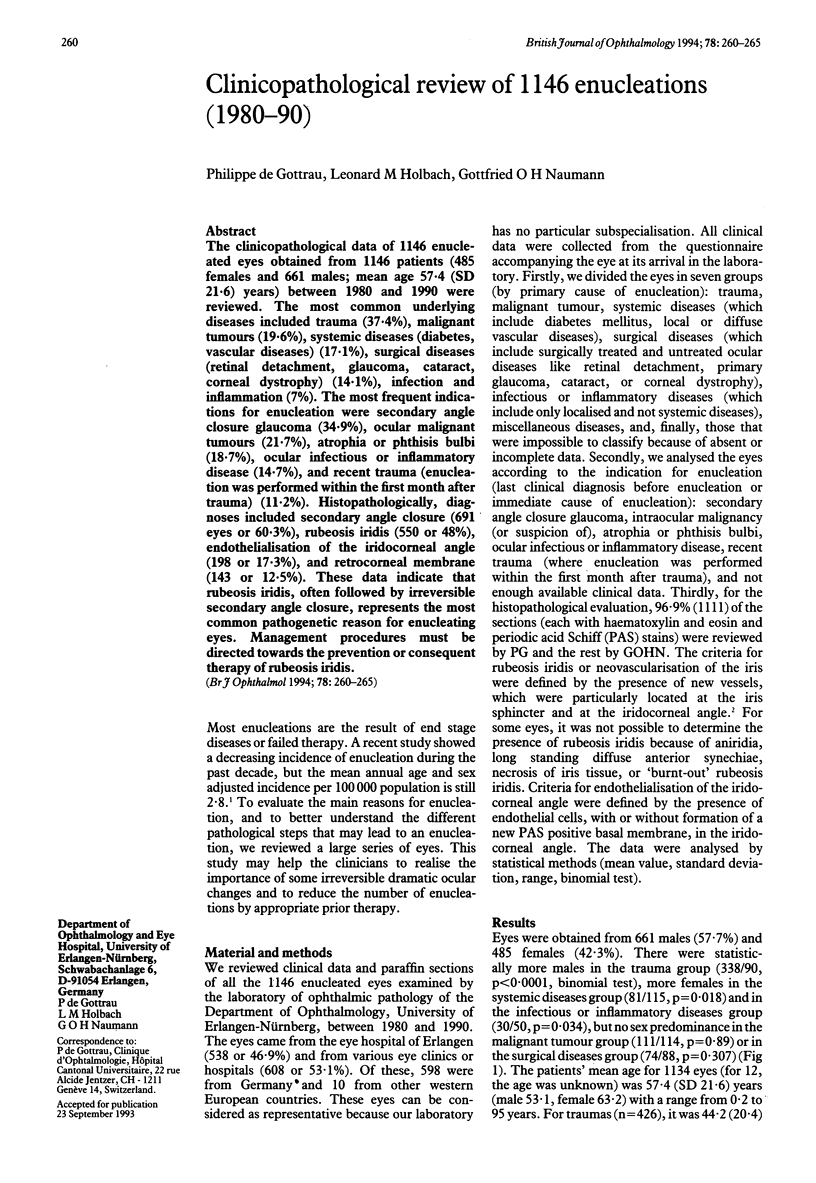
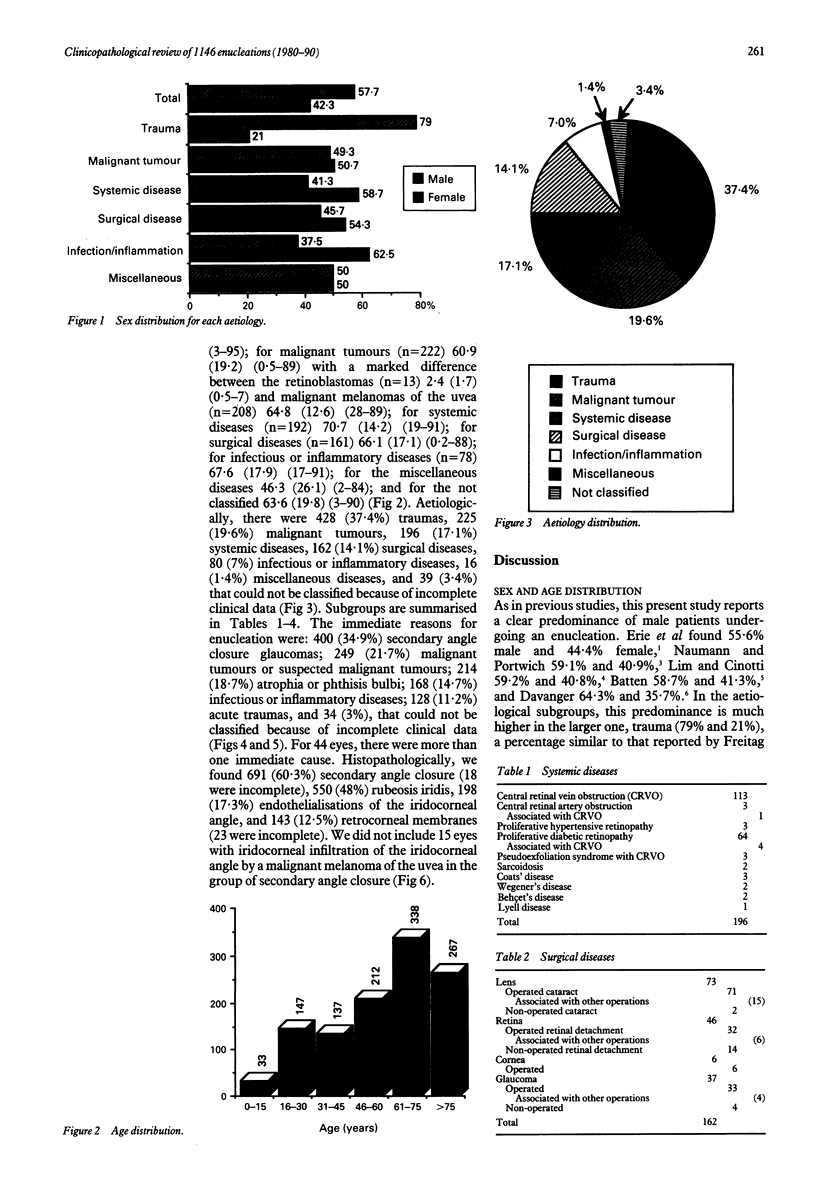
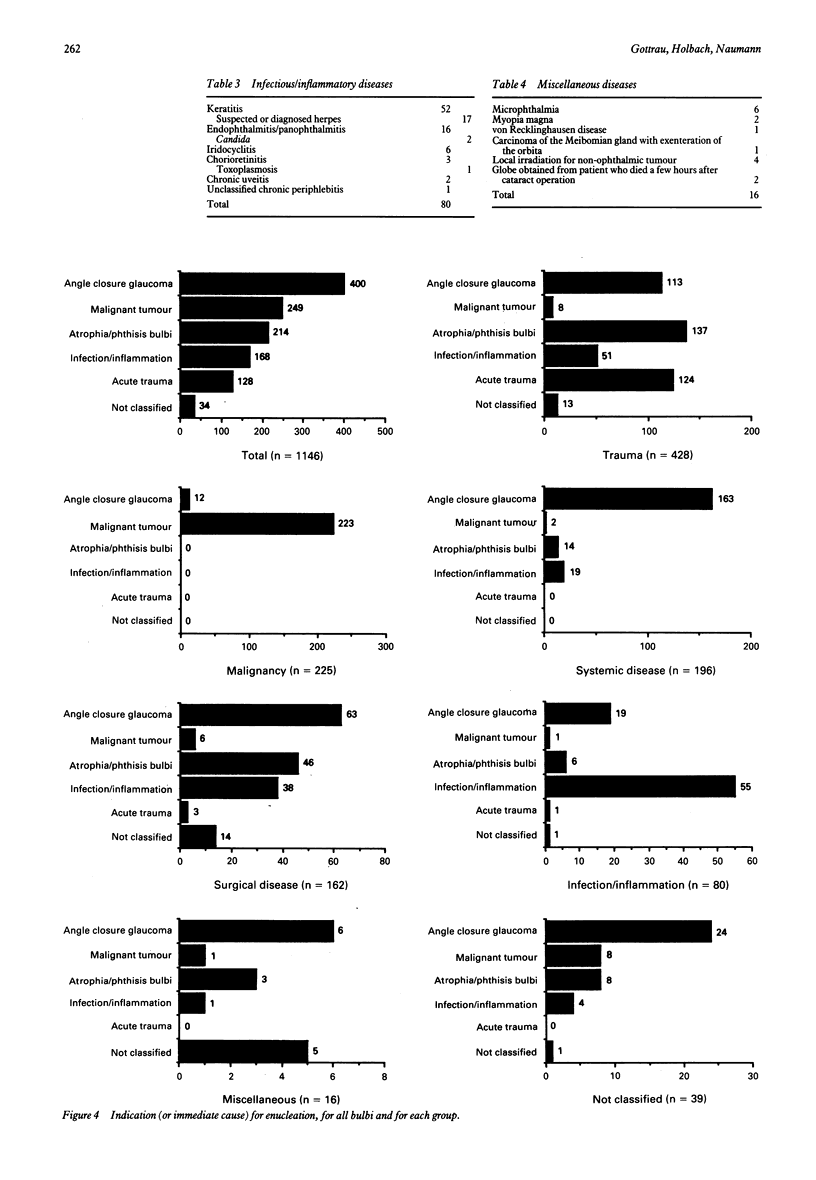
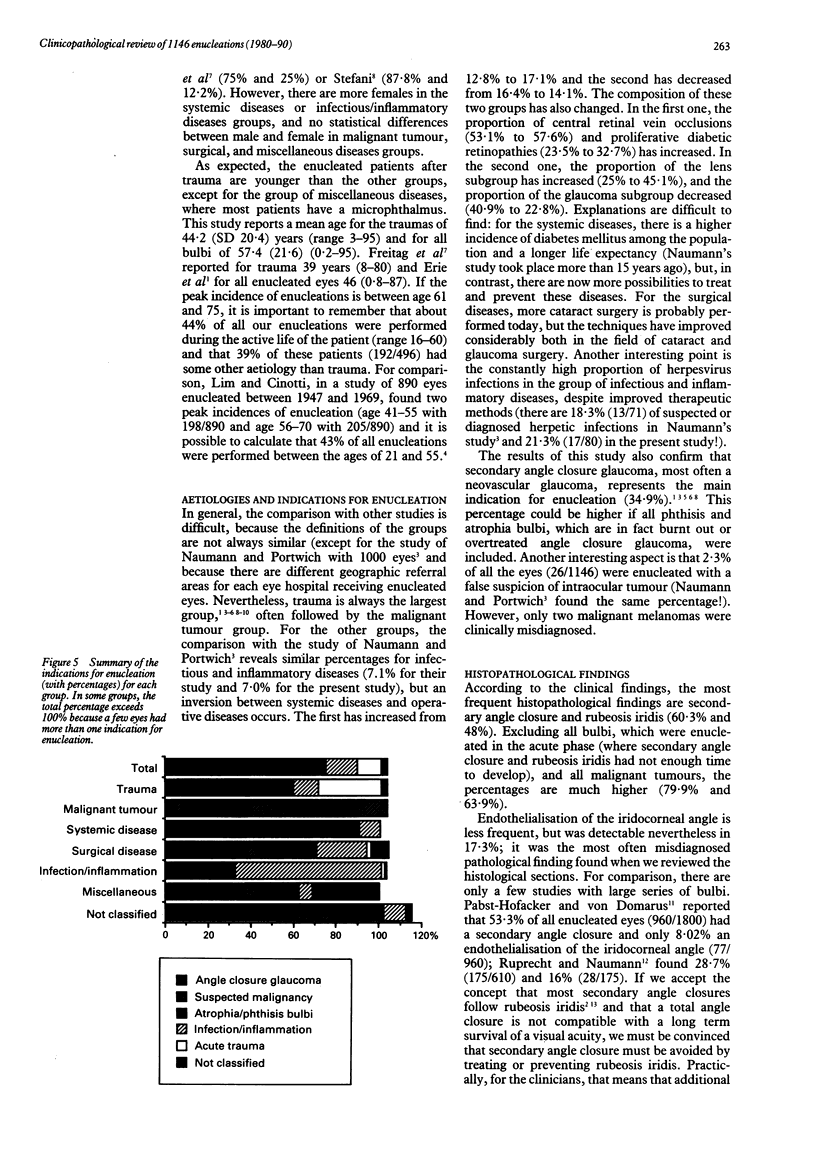
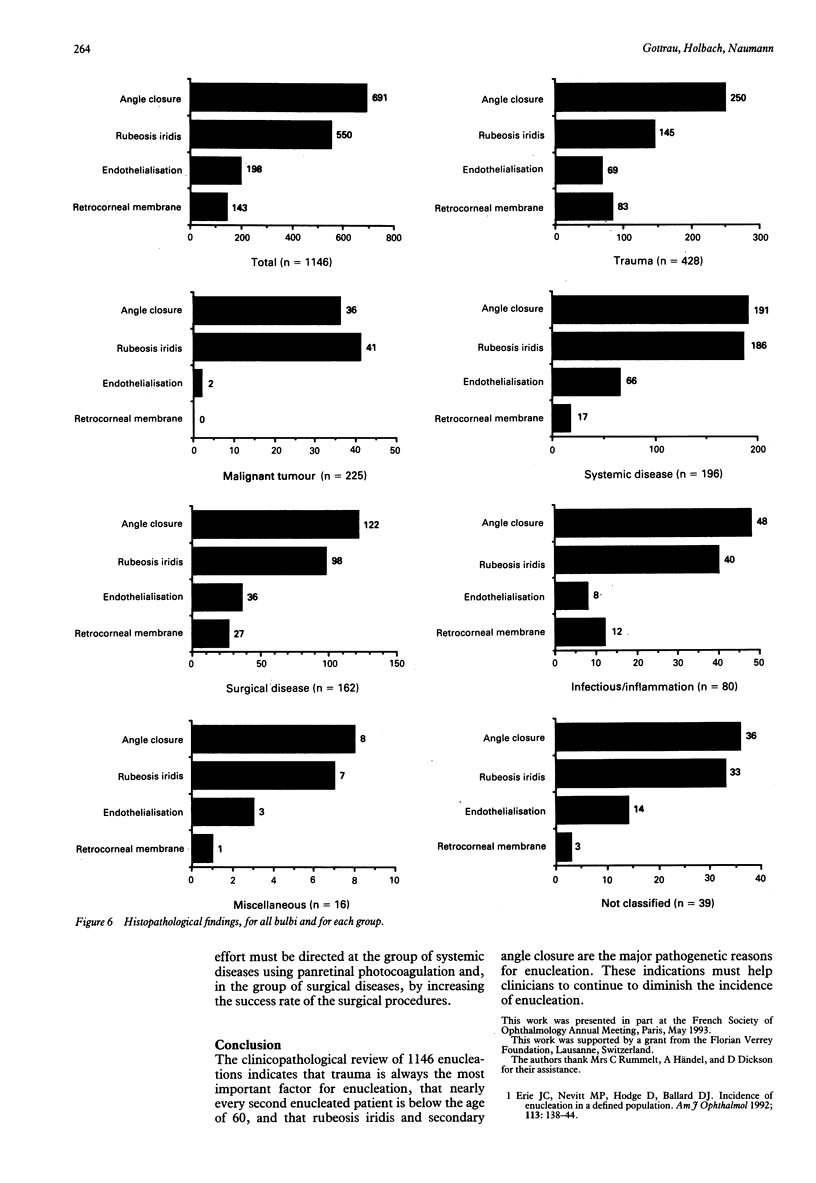
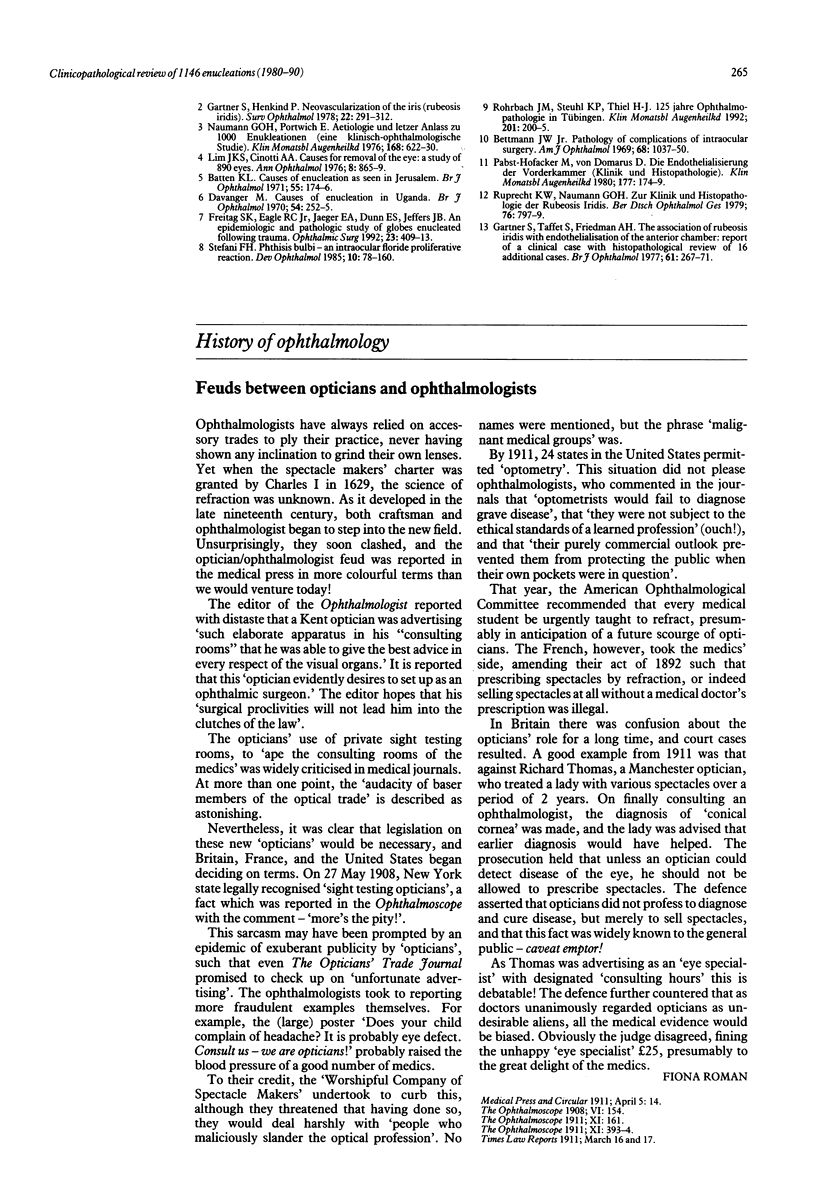
Selected References
These references are in PubMed. This may not be the complete list of references from this article.
- Batten K. L. Causes of enucleation as seen in Jerusalem. Br J Ophthalmol. 1971 Mar;55(3):174–176. doi: 10.1136/bjo.55.3.174. [DOI] [PMC free article] [PubMed] [Google Scholar]
- Davanger M. Causes of enucleation in Uganda. Br J Ophthalmol. 1970 Apr;54(4):252–255. doi: 10.1136/bjo.54.4.252. [DOI] [PMC free article] [PubMed] [Google Scholar]
- Erie J. C., Nevitt M. P., Hodge D., Ballard D. J. Incidence of enucleation in a defined population. Am J Ophthalmol. 1992 Feb 15;113(2):138–144. doi: 10.1016/s0002-9394(14)71525-9. [DOI] [PubMed] [Google Scholar]
- Freitag S. K., Eagle R. C., Jr, Jaeger E. A., Dunn E. S., Jeffers J. B. An epidemiologic and pathologic study of globes enucleated following trauma. Ophthalmic Surg. 1992 Jun;23(6):409–413. [PubMed] [Google Scholar]
- Gartner S., Henkind P. Neovascularization of the iris (rubeosis iridis). Surv Ophthalmol. 1978 Mar-Apr;22(5):291–312. doi: 10.1016/0039-6257(78)90175-3. [DOI] [PubMed] [Google Scholar]
- Gartner S., Taffet S., Friedman A. H. The association of rubeosis iridis with endothelialisation of the anterior chamber: report of a clinical case with histopathological review of 16 additional cases. Br J Ophthalmol. 1977 Apr;61(4):267–271. doi: 10.1136/bjo.61.4.267. [DOI] [PMC free article] [PubMed] [Google Scholar]
- Lim J. K., Cinotti A. A. Causes for removal of the eye: a study of 890 eyes. Ann Ophthalmol. 1976 Jul;8(7):865–869. [PubMed] [Google Scholar]
- Naumann G. D., Portwich E. [Etiologie und letzter Anlass zu 1000 Enukleationen (Eine klinisch-ophthalmologishe Studies] Klin Monbl Augenheilkd. 1976 May;168(05):622–630. [PubMed] [Google Scholar]
- Rohrbach J. M., Steuhl K. P., Thiel H. J. 125 Jahre Ophthalmopathologie in Tübingen. Wandel der Zeiten und der Befundspektren. Klin Monbl Augenheilkd. 1992 Sep;201(3):200–205. doi: 10.1055/s-2008-1045895. [DOI] [PubMed] [Google Scholar]
- Stefani F. H. Phthisis bulbi--an intraocular fluoride proliferative reaction. Dev Ophthalmol. 1985;10:78–160. [PubMed] [Google Scholar]


